Today, I am reviewing a new ligature made by Silverstein Works. For years I have heard about the amazing results that musicians would get from string ligatures. These whispers and rumors were usually heard on different clarinet boards and forums that I would visit. These posts were so compelling and convincing that I had to try using one.
Here are some statements I found doing a quick search on Google:
“This allows maximum vibrations, while preventing unwanted dampening caused by the “clamp” of a metal ligature”.-Wurlitzer Clarinets America.com
“The response is fantastic! When people first see the string, they are dumbfounded then amazed. I first learned about the string Lig from Jimmy Giuffre of the Woody Herman Thundering Herd.”-King Koeller (SOTW)
“I have yet to find a clarinetist who has judged the sound and response of the string ligature to be anything but unparalleled”-Will Cicola
Of course, quotes like these are all subjective opinions, but they did make me curious…………
Years ago, I remember trying to wrap a shoe string around my mouthpiece to see how it would play. Needless to say, after 15 minutes of trying, and the reed slipping and moving, I gave up……….
Silverstein Saxophone Ligature
Doing a search online for “string ligature clarinet” I found a couple of links that show the complexity of creating a string ligature. As well as this one. There is even this video on how to create a string ligature on Youtube. It only takes a few minutes to read these pages or watch the video to know that this procedure is complex and takes time and patience. Too much time and patience for me that is for sure. I want to wet my reed put the ligature on and play as fast as I can. I’ve never been much for reed working or ligature tying so I gave up on the string ligature idea……………until……..
Silverstein Fancy Box
Lately I have been hearing a lot of buzz about Silverstein’s new string ligature on Facebook and I just had to try one out. Silverstein Works was good enough to send me an alto and tenor ligature to review. These two ligatures are sized to fit on a hard rubber Otto Link sized tenor mouthpiece and a hard rubber Meyer sized alto mouthpiece.
Silverstein Personal Touch
They come in a very fancy metal box that is elegantly wrapped and has the personal touch of having your name printed on it. This really has nothing to do with the ligature but the fact that they took the time to personalize the ligature box coupled with the various correspondents back and forth prove to me that this is a top notch company that takes the time do things the “right” way.
Silverstein Saxophone Ligature
As you can see from the pictures, the ligature has a strong black string that loops through a silver metal device at the top of the ligature. The string is not flimsy or lose but is nice and firm. The top screw mechanism has rubber pads on the area that touches the mouthpieces to avoid scratching and gouging of the mouthpiece which is appreciated. (There’s nothing worse than trying a new ligature and finding scratches all over your expensive mouthpiece when you are done………….) There are two metal bars that are on either side of the ligature and rest on the sides of the mouthpiece. These bars are movable and can be positioned closer to the reed or farther apart. I am told that the placement of these bars can affect the brightness, darkness and focus of the sound.
Silverstein Saxophone Ligature
When I first tried it on my Early Babbitt hard rubber Link and 10mFan Robusto mouthpiece it was a bit tight. At first, I got worried that it was too small and that they sent me the wrong size. I slid it on as far as it would go and then tightened it a good amount. I loosened it and then found I could slide it on a little farther. After doing this a few times it now fits comfortably on my hard rubber tenor mouthpieces. Silverstein Works says that this is normal and that there is an initial break in period when the ligature is brand new.
Silverstein Saxophone Ligature
I want to quote from the Silverstein website as their impressions of the ligature and the difference between the different ligature makes and materials is so beautifully written:
“Feel what pure reed sound is like. Metal vibrates along with the reed, adding unwanted noise. Metal ligatures have become thinner to try and minimize surface contact as a result. Non-metal ligatures are often too soft to hold the reed tightly in place, while also dampening the sound with an over-abundance of surface contact. They often add metal studs to try and alleviate the problem, once again giving you unnecessary and unwanted noise from metal vibrations. Silverstein Ligatures have the perfect balance of strength to secure the reed and minimize surface contact, while allowing it to fully vibrate with no metal on the reed.”
I thought this was a great summary of the effects that different ligatures and materials can have on a reed.
Silverstein Saxophone Ligature
My personal findings with this ligature is that it is great! I found that it darkened the sound slightly from my metal ligatures but didn’t deaden or dampen the sound at all in my opinion. In the past, I have tried using Rovner leather ligatures and I liked how they darkened the sound on many mouthpieces but I also noticed that it seemed like many of the higher frequencies and partials in the sound were dampened. The sound wasn’t as “lively” for me. The Silverstein ligature doesn’t do that. Although the sound is darker it is still very much “lively” and “resonant” which for me is the optimal result a player should want!
The other thing I love about this ligature is that there seems to be so much more variation in how tight or loose you can adjust it. Metal ligatures have a little bit of adjustment room but not much. If you tighten it you very quickly get to a point where the ligature is pressing and gouging into the reed. The Silverstein ligature can get tighter but you never have to worry about that gouging affect. You can experiment with how tight or loose it is and it makes a big difference in the sound and focus.
Silverstein Saxophone Ligature
If you are interested in the Silverstein Saxophone or Clarinet ligature contact Silversteinligature.com to get a list of their distributors. These ligatures are on the high end price wise but they are top quality products and come with a life time warranty which protects against any breaking, stretching, morphing or unnatural changes to the cord. This type of warranty is rare in the saxophone world and again speaks to Silverstein’s commitment to excellence and customer service. Contact a distributor and give one a try. Let me know what you think………. Steve
P.S. If you don’t think a ligature is worth this kind of money or doesn’t make a difference at all you can also check out my other two blog posts on this subject:

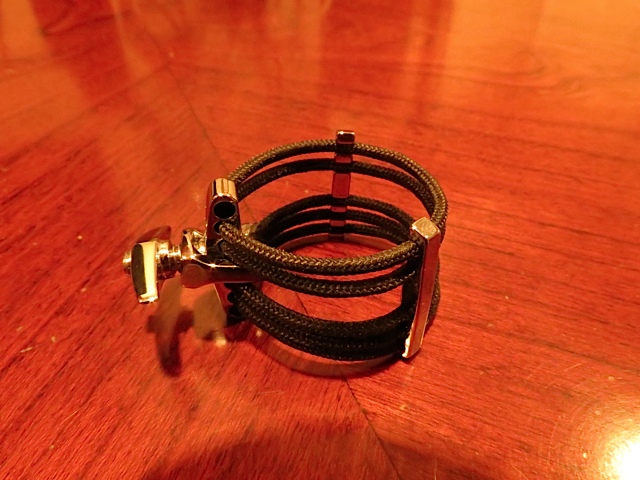
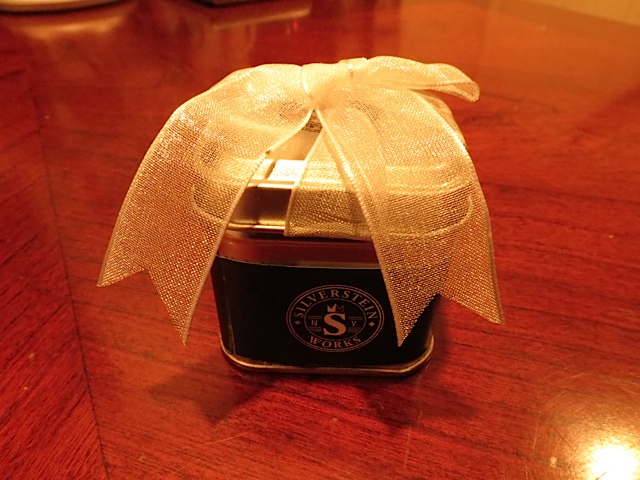
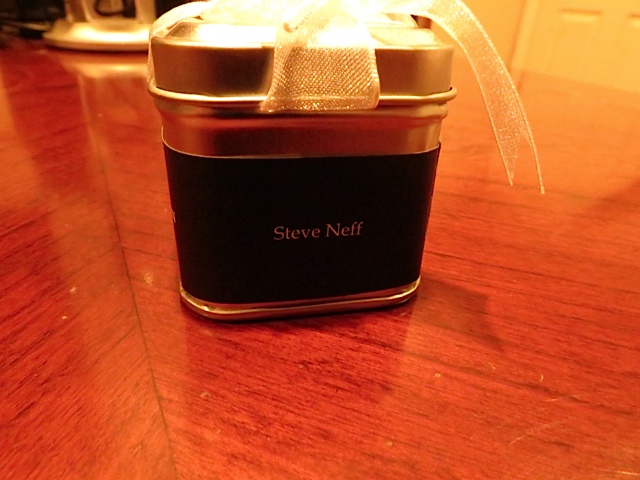
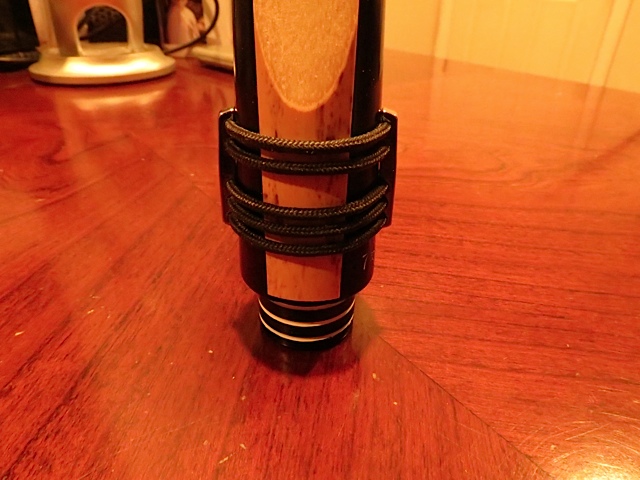
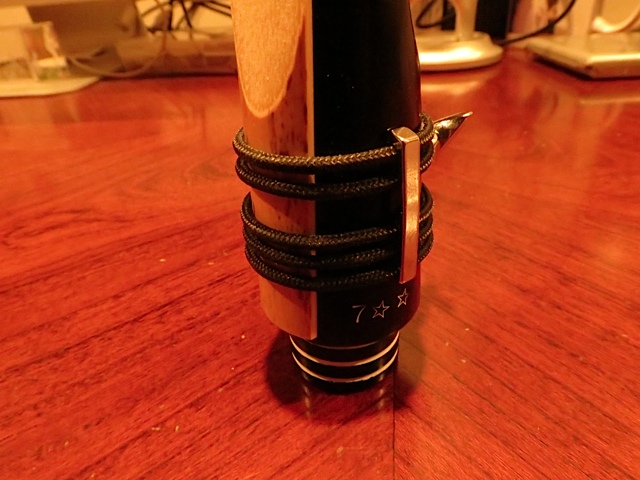
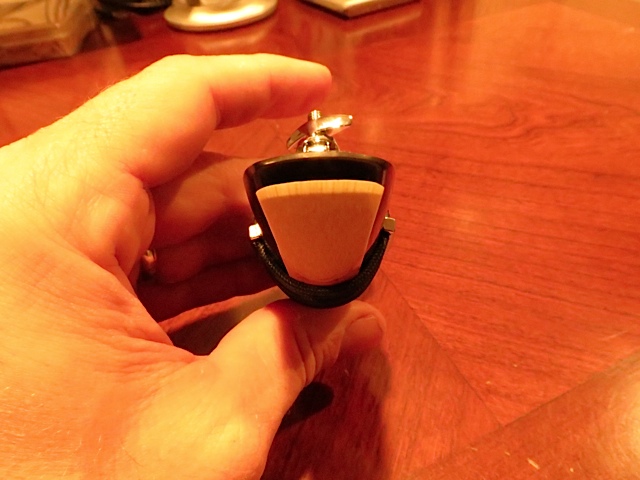
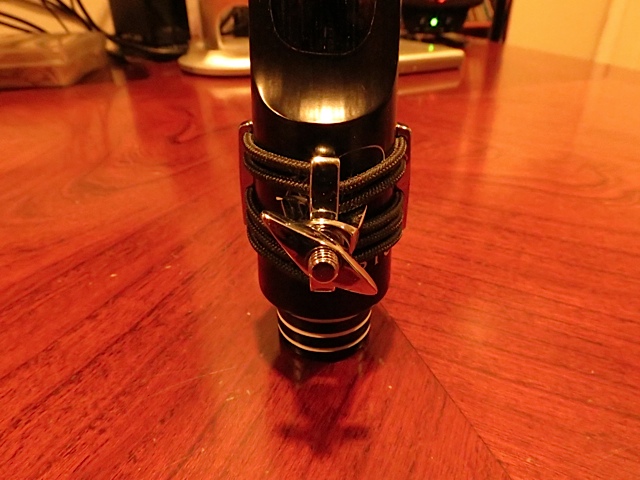
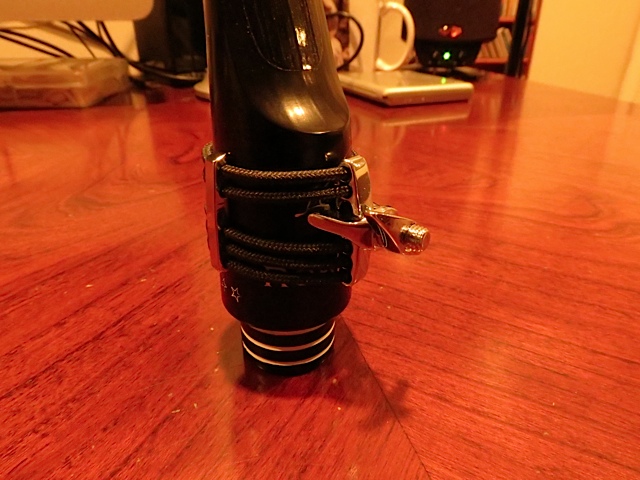



I’ve been testing the ligature for awhile and I’m now an endorser of their product. It’s a great ligature with incredible customer service. Thanks for all the work you do at this site. I’m a big fan!
Thanks Korey, They are great ligatures. What ligature did you use before the Silverstein and what was it about the Silverstein that convinced you to switch? I’m just curious about other people’s opinions…….. Thanks, Steve
One remarkable effect of the Silverstein ligature is allowing the reed to vibrate in 2 octaves at once. It is a beautiful piece of work.
Glen, I’m not sure what that means. How does a reed vibrate in two octaves at once?
Yeah, Steve, I know!! 2 octaves??!! Imagine my surprise. I was just blowing different ways and was looking for an old fashion “Chicago” style growl and was surprised when an octave harmonic showed up. I mentioned it on another professional post and he said he found the same thing. I play an old Woodwind
Wow Glen. I’m going to have to put the ligature back on and try going for that effect. How tight to you tighten the ligature. Loose, medium or really tight?
Hi Steve; I use the ligature pretty tight, but have it a little lower on the reed_maybe 5mm_ than usual. VanDoren Jazz reed. I was also able to get the effect with a Vintage reed (from Australia). The Vintage is a very lively reed.!
Hi Steve, I am using Rovener ligatures to minimze the buzzy sounds of my metal mouthpieces – Dukoff for alto sax and Guardala MBII for tenor sax. I am satisfied what Rovener does for my Dukoff, but doesn’t like the sound of MBII with rovner on it. Do you think this ligature would be a good match for the metal mouthpieces like Dukoff or MBII?
I was skeptical of the ligature at first. The website sounds like a lot of hype, in the way it’s written, to be hones-even to someone who knows the impact the ligature has on the sound.
Like, you, I had a “breaking in” period that put me off the ligature at first. But I’m glad I didn’t give up and file it away in my “abandoned experiments” drawer. It has actually become my ligature over the Vandoren Optimum I had been using
I am using this on my tenor Guardala “studio” and love it!
However, it sounds best for me with the three cords closer to the tip of the mouthpiece. My horn is a SX90.
Thanks Leon. This is one of those super secret tips that no one shares……… thanks for letting us in on it!
I would think turning the Silverstein ligature around to have the effect of “brightening” the sound. Much like moving a normal ligature closer to the reed shoulder. I will have to try it, although my vintage brass mouthpiece has a pronounced taper..
Hey, so Im looking for a good gift for my section leader what other “darker sounding” ligatures besides this should I check out?
Logan, For dark I would go with a Rovner. For focused and clear I would go with a Francois Louis or Vandoren Optimum. For “lively” and responsive I would go with a Marc Jean or Silverstein. Hope this helps.
Ok. thanks so much
I received my Silverstein tenor and soprano saxophone ligatures. I like them very much and they did project a little better than the Francois Louis ligatures, so much so that I decided to sell my Francois Louis ligatures on Ebay.
Thanks again for you insight, jerry Bergonzi and J.D. Allen convince me to try them.
Keep swinging,
Earl “Tip Toe” Belcher
http://www.earltiptoebelcher.com
Hi Steve,
Are you able to adjust (twist) your mouthpiece on the cork while using the Silverstein ligature. I use a Theo Wanne Gaia with its Enlightened ligature, which is nice, but I have to remove the ligature and the reed to twist the mouthpiece, if I need to do so, because the reed will come unseated, if I don’t remove the ligature.
You commented about the ligature not dampening the high notes. Does it color them at all? How was the altissimo range with this ligature and have you had the opportunity to try a Silverstein on your soprano saxophone? Thanks for your help and the useful review.
Best regards,
Heath
Hi Heath,
It is a bit tricky to twist and move the mouthpiece with the Silverstein ligature on it. It is similar to my Francois Louis Ligature in that I have to be really careful with both or the ligature will slip and the reed will move.
I haven’t tried the Silverstein on my soprano yet. The altissimo range had a normal response for me. Not any easier and not any harder than usual. I honestly couldn’t detect any change or coloring of the high notes because of the lig. Steve
Thanks for replying, Steve. I received a Silverstein a couple days ago through their “Trial for Pros” program. So far, I like it very much. It fits tightly enough on my mouthpiece that I can twist it slightly, if necessary. As you remarked, the ligature is not inhibiting the altissimo range. It seems like my sound is slightly darker than when I use my Theo Wanne Enlightened Ligature, but this could be my imagination. I need to do some recordings to test the sound.
Heath
I think it is slightly darker but I like that. Many times I find metal ligatures give me too much brightness on the high notes. Sometimes it can even be shrill up there. I feel like the Silverstein takes a little of that edge off but not nearly as much as a Rovner does that is for sure………
I agree. I’ve been looking for something darker, too. Have you tried the Vandoren Klassik ligature? I noticed that Claude Delangle is using one on his soprano and I like his soprano sound. I’m not sure how well the Klassik will fit my Theo Wanne Gaia.
I had been using a Francois Louis Ligature for a couple of years, when I tried the Silverstein ligature it sound clearer and I new right away that this ligature was better. I sold my Tenor and Soprano Francois Louis ligature on ebay.
I put my mouthpiece and neck together before slipping on my Silverstein Ligature to minimize reed movement during assembly. I use a very warm, large chambered soft brass vintage Woodwind tenor mouthpiece.
I use the ligature tight and on the reed shoulder to brighten the sound and loose and about 1/4 inch back to warm the sound. My kick comes from feeling the reed dance under my lip!
Woah is that the box it comes in?
Yep, that’s the box…….Silverstein doesn’t mess around……….
Over a year ago I took the $150 gamble and purchased a Silverstein “Original” ligature for my Clarinet to replace the Rico H which I had purchased with a new mpc. The difference was very noticeable, especially in the higher range of the instrument and I was happy with the purchase. So I recently purchased a Silverstein “Prelude” for my Phil-Tone Alto Sax mpc. The Prelude was being offered at a sale price and I couldn’t resist. I had been using either a Rico H or a Theo Wanne ligature. Again, there was a noticeable difference. How? Better response on low C down to bell notes, richer midrange and very responsive altissimo. I’m not finding the tone to be darker, just richer, which I think means more harmonics. I’m using a D’Addario jazz select and a Fibercell reed for comparisons. Still experimenting with reeds but just on these two, they performed very well. This is a good product.
Thanks Steve. I had that wow moment at the dealer and couldn’t resist buying it! I found how much I was missing with my other ligatures once I tried this! I have a 10MFan The Classic and was looking for a way to add more dimension to that already beautiful sound. It is the perfect recipe. The sound has more colours, more dimension, and a bit more spread. Almost like you have spread and focus at the same time! I tried different reeds and all came out great. Dark reed cuts (thicker tip, and even ones I thought are a bit lifeless) sounded dark but vibrant and lush, brighter ones sounded more lush and less spikey. There so much forgiving in the positioning of the ligature that it’s hard to get a bad position. It all changes gradually and organically.
I love it!!!
Thanks again.
Hi all,
I use a BG PT1BG Tenor Saxophone Crook Pouch which lets me put the crook with the mouthpiece in together, no need to take the mouthpiece on and off, then slot this into the bell of the tenor for carrying. That means once I’ve got the perfect positioning of the mouthpiece I’m not really moving it. And the Slverstein Lig is a vast improvement on the built in lig for the Gaia 3 !
Neil, I do that also. You might do this already, but I suggest taking the reed off of the mouthpiece. The gold plating wears a lot faster when a wet reed is left on the mouthpiece all the time. Steve